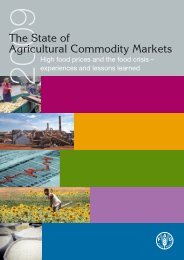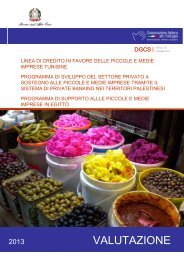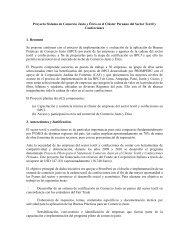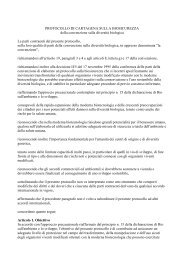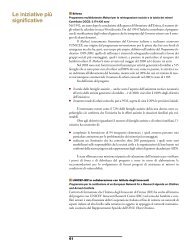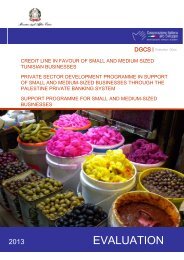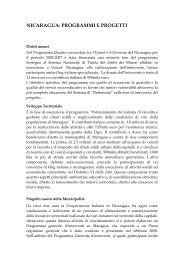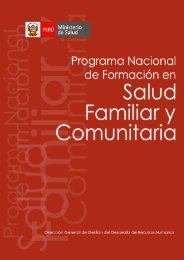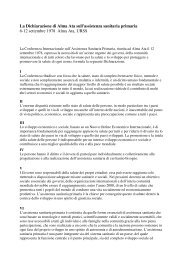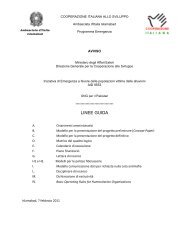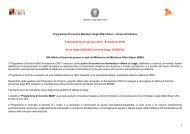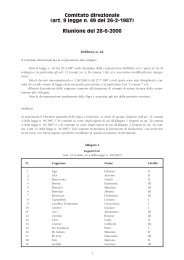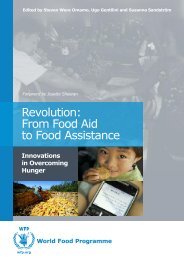FRONTESPIZIO - Cooperazione Italiana allo Sviluppo
FRONTESPIZIO - Cooperazione Italiana allo Sviluppo
FRONTESPIZIO - Cooperazione Italiana allo Sviluppo
You also want an ePaper? Increase the reach of your titles
YUMPU automatically turns print PDFs into web optimized ePapers that Google loves.
5. Human resources for health (HRH): a crucial element for achieving international MDGs. 61Representing minority groups in the workforce and setting the rightskill mixThe Millennium Declaration call for priority to be given to the poor. Oftenthese groups are under- or not at all represented in the health sector workforceand are not sufficiently taken onboard in establishing priority needs interms of health and acceptable and desirable social services.It has been reported that a major reason for extremely low access to healthservices and coverage of nomadic communities in different areas consists inlinguistic and cultural differences to the health personnel. Similar problemsare also described for minority groups such as the Rom people in EasternEurope or migrant laborers. Thus, it will be necessary to employ personnelwith a specific social, ethnic and cultural background for an effective and efficientdelivery of priority interventions to the poorest and most disadvantaged.In Ethiopia, for instance, health personnel from the highlands, normally havedifficulty in approaching and adapting themselves to pastoralist communitiessuch as those of “emerging regions” like Gambela, Afar, Somali, etc.“Skill mix” refers to the mix of posts, grades or occupation in an organization.It may also refer to the combinations of activities or skills needed foreach job within the organization. Setting the right “skill mix” for a definitecountry situation is a long process that should start with a task analysis. Thatis to know the tasks that different staff have to carry out at different level ofthe organization and the skills needed to perform them. The further step is,within the educational system, being able to plan, recruit, train and retainhealth personnel with the necessary bundle of skills. Especially for low- andmiddle income countries, there have been attempts to go beyond the traditionaldefinitions of skills defined by membership of a profession (medicine,nursing, midwifery and other health related professions). So, due to specificneeds, the range of health care workers has been widened to meet the serviceneeds. Some of them can enter the system after a very basic training in extremelybasic preventive and curative skills, while others receive enhancedtraining on specific key skills, such as generic nurses trained in emergency obstetricsor in primary surgery.Geographical imbalances (uneven distribution of health staff)The size and composition of the workforce will determine if priority interventionscan be delivered effectively and efficiently. Countries such as theUnited Kingdom, Ghana, Mauritania, Ethiopia or Zimbabwe report defi-



